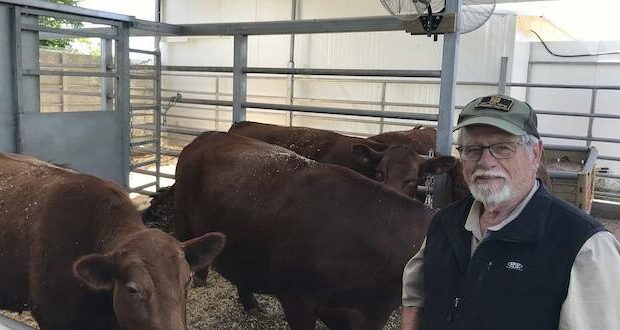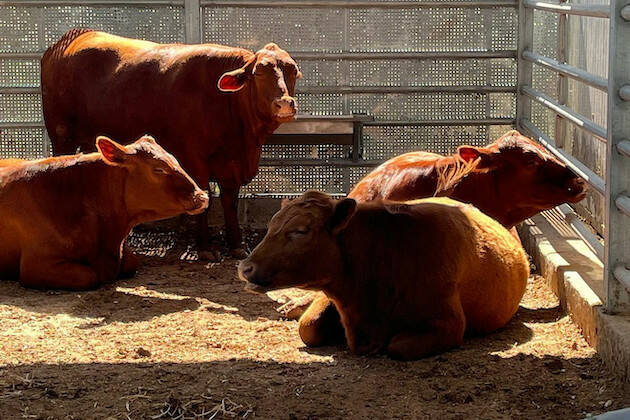SHILOH, Israel —When a small conference was held this spring in Israel’s biblical heartland on the laws related to the red heifer, both Hamas and Hezbollah posted the ad for the event on their Telegram pages.
Just months earlier, a Hamas spokesman in Gaza had chosen the 100th day of the Israel-Hamas war to cite the relocation of five red heifers to Israel from the Lone Star State as the reason for the Oct. 7 massacre.
“It seems like the whole world is talking about the red heifers except in Israel,” said Moriyah Shapira, a spokeswoman for Ancient Shiloh, the Samaria region where the biblical Tabernacle once stood. And which, for the last six months, has also served as the home of the select reddish-brown ginger calves which are theologically prerequisite to the rebuilding of the Jewish Temple, raising interest and eyebrows in the Christian and the Muslim worlds, respectively.
Visit Ancient Shiloh with Metro Voice in 2025
“They understood the importance of red heifers more than us,” said Shapira.
When Indiana farmer Larry Borntrager, 76, first chanced upon the prized cows during a wartime trip to Israel last fall, his first thought was the state of their lodgings. The makeshift shed at the historical site was a far cry from the accommodations the animals had enjoyed when flown across the Atlantic first class as pet luggage two years ago.
If they’re going to be used for such a holy [purpose], then they should at least be presentable.
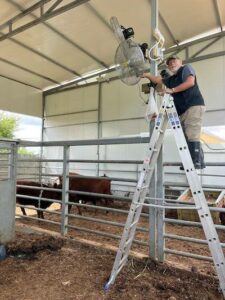
Larry Borntrager installs fans in the calves’ shed to protect against the fierce summer heat. Credit: Courtesy.
“If they’re going to be used for such a holy [purpose], then they should at least be presentable,” he told JNS in an interview last week, recounting his first impressions of the heifers.
There and then Borntrager got to work. The retired farmer, who was raised on a dairy farm in northern Indiana, quickly made friends with the animals, cleaned their small shed, renovated the stalls and even installed fans ahead of the coming summer heat.
In the months since, he has become an inseparable part of their lives when he is in Israel, caring for them and checking in on them a couple times a week.
Three of the heifers to be bred
A new visitor’s center is under construction at the site, where the curious will be able to watch a film about the history of the red heifers, according to Shapira. The center is slated to be completed this fall.
In the meantime, three of the five animals, who are routinely checked by a group of rabbis for any blemishes that would strip them of their ritual eligibility (such as two hairs of a different color), have been disqualified and will be bred in the coming weeks via artificial insemination to produce more promising offspring, she said.
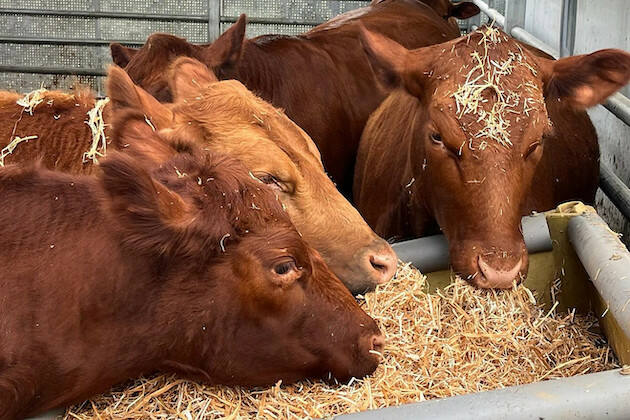
The enigmatic red heifer, or Parah Adumah, is first mentioned in the Book of Numbers. Credit: Courtesy.
An unusual journey
Feasting on hay and feed in their upgraded lodgings, the five affable calves, aptly named Tikva (Hope), Geula (Redemption), Segula (Virtue), Techiya (Rebirth) and Nechama (Comfort), were glad to see the sprightly Indiana farmer as he entered their barn Thursday. Borntrager knows them all by name, and keeps a small notepad in his shirt-pocket with sketches of each’s distinct characteristics.
Borntrager, who is of Amish ancestry, is a Noahide, even declaring before a rabbinical court in Jerusalem that he observes the Seven Laws of Noah. It was this that allotted him special dispensation to care for the calves, if not as of yet a long-term visa to Israel.
His calling to Israel began back in the 1970s when he and his wife served as Mennonite missionaries in Central America. After the 1973 Yom Kippur War broke out, Borntrager says he was drawn to the Jewish state by what he terms an “inner calling.” He recalled feeling elated when he heard good news about Israel and down when the news was bad.
He was spending time in Israel’s Arava region with his wife and three sons in the 1980s when he first heard about the red heifers, and got connected with a dig in the Qumran caves looking for ashes of the ceremonies that took place over 2,000 years ago during the time of the Jewish Temples.
His plans to continue with the excavation were interrupted by the outbreak of the Israel-Hamas war on Oct. 7, 2023. Instead, he volunteered in an Israeli agricultural community near the Gaza border. It was during his visit to an Israel at war that he learned the red heifers he had first heard about a quarter-century earlier were actually in Israel; a friend took him to see them in Shiloh.
From the Lone Star State to the Jewish state
The calves, too, have had an unusual journey. Born in Texas to a special breed of cows known as Red Angus, they were only a month or so old when their owner connected with a group of people from Jerusalem who had put an ad out in a U.S. farmer’s magazine in search of the elusive red heifer, which hadn’t been seen in two millennia. They were offering a whopping $15,000 per cow (the going rate was $300-$1,000), according to Shapira.
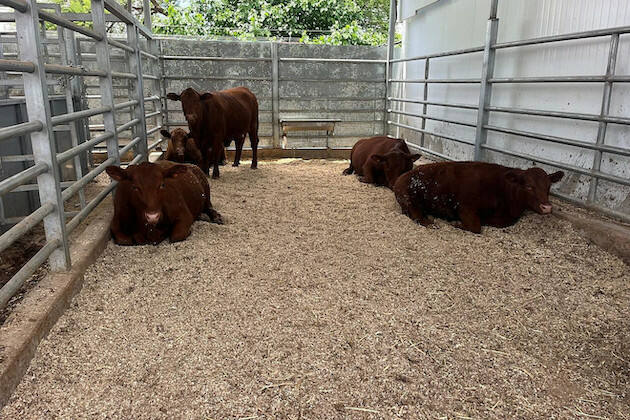
Tikva (Hope), Geula (Redemption), Segula (Virtue), Techiya (Rebirth) and Nechama (Comfort) relax in the shade of their shed. Credit: Courtesy.
The Christian owner told them by phone that he had indeed chosen the breed thinking that they could potentially serve in the Temple.
After getting a deluge of replies, the group first conducted tests across the Atlantic via Zoom to see if the cows qualified before traveling to the Lone Star State to perform the intricate checks in person. One farm was of particular interest; the Christian owner told them by phone that he had indeed chosen the breed thinking that they could potentially serve in the Temple.
In the end, five female calves who because of COVID had not been branded—which would have disqualified them by religious law—were selected. Then, to circumvent restrictions on the import of livestock, they were granted special dispensation to fly to Israel as pets in first-class luggage.
Despite the stir their presence in Israel has created abroad, some say the idea that they would actually be ritually sacrificed is presently far-fetched, even if a small group of rabbis is now studying the relevant religious laws.
The enigmatic red heifer, or Parah Adumah, is first mentioned in the Book of Numbers, when God instructs Moses and Aaron to take “a perfectly red, unblemished cow, upon which no yoke was laid.” The animal is subsequently slaughtered, and its ashes used in a purification ritual.
Such animals were rare even in antiquity. Jewish sources state that only nine were slaughtered in the period from Moses to the destruction of the Second Temple in 70 C.E. According to the 12th-century Jewish sage Maimonides, the Messiah will offer the tenth red heifer.
This ceremony hasn’t been performed for two thousand years.
“This ceremony hasn’t been performed for two thousand years,” Shapira said, downplaying concerns of a religious war. “The idea is to be ready with what we can.”
For now, the biblical quote, with a sample of the cedar wood and hyssop used in the ancient ceremony, are the only things on display outside their pen, and the calves seem destined both for longevity—and popularity as a tourist attraction after the war with Hamas ends.
For Borntrager, it makes no difference.
“This little thing I am doing is my contribution,” he said. “It’s most enjoyable for me to take care of them. I feel it’s rewarding.”
–By Etgar Lefkovits | JNS.org | used with permission
 Metro Voice News Celebrating Faith, Family & Community
Metro Voice News Celebrating Faith, Family & Community 
